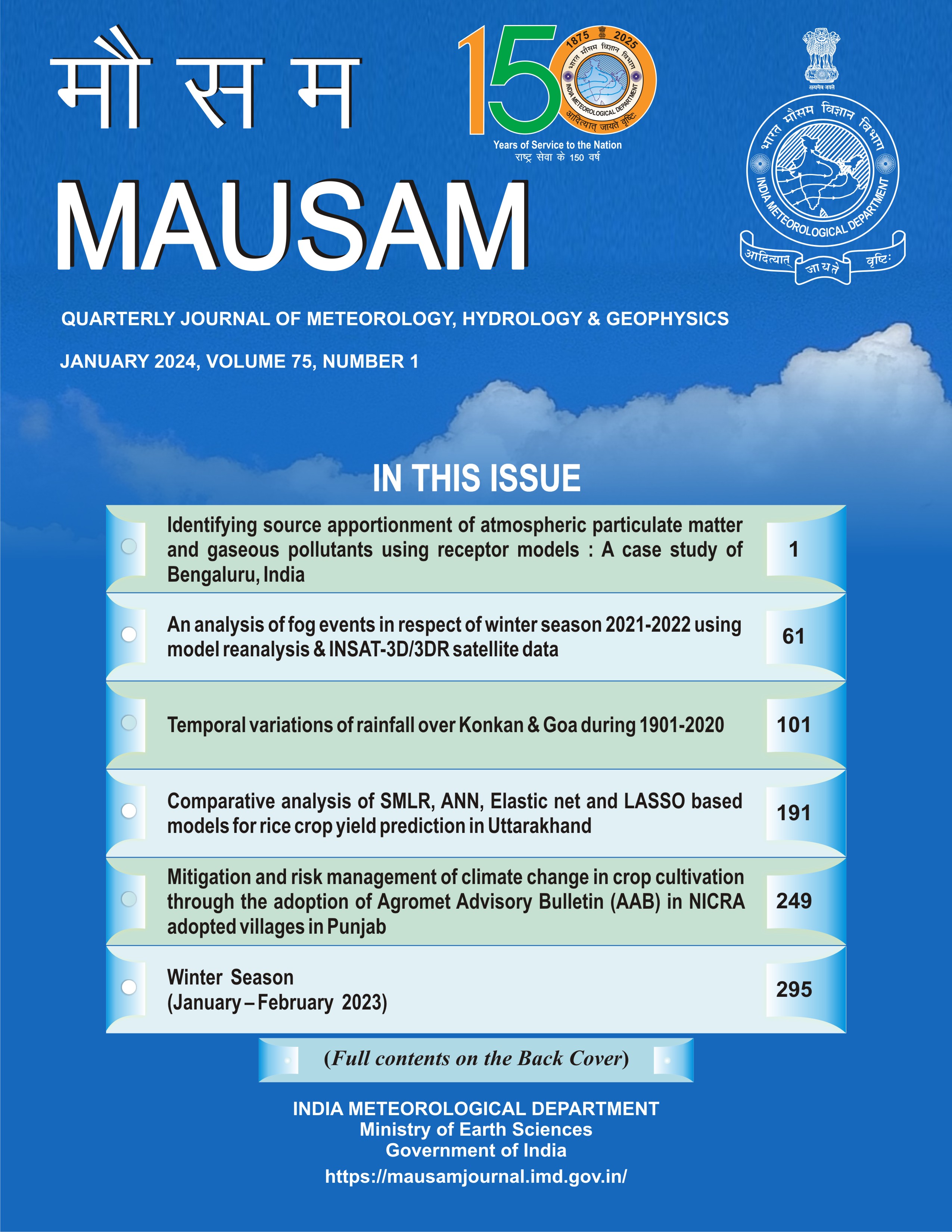Mitigation and risk management of climate change in crop cultivation through the adoption of Agromet Advisory Bulletin (AAB) in NICRA adopted villages in Punjab
DOI:
https://doi.org/10.54302/mausam.v75i1.6140Abstract
Crop production is a direct output of manageable (agronomic) and unmanageable (weather) inputs. A farmer can cut down losses in crop production due to aberrant weather conditions by following weather forecast. India Meteorological Department is providing weather forecast on eight weather parameters at district and block level. Under All India Coordinated Research Project on Agrometeorology-National Innovations in Climate Resilient Agriculture, an Agromet Advisory Bulletin (AAB) is prepared by using this forecast for coming five days and disseminated to farmers. To evaluate the impact of AAB in three selected villages Badoshe Kalan and Bauranga Zer (district Fatehgarh Sahib) and Rampur Fasse (district Rupnagar) a survey from 110 farmers was conducted. Amongst the 110 farmer, 70 were marginal/small farmers (landholding <2.0ha) and 40 were medium farmers (landholding 2-10ha) who adopted the information given in AAB in crop cultivation. The analysis revealed that by following AAB in rice and wheat crops 65-93% farmers benefitted by managing biotic stresses, 65-85% farmers by irrigation management, 75-78% farmers by adjusting sowing and 62-65% farmers by nutrient management. The farmers who scheduled irrigations to their crop by adopting AAB in rice-wheat cropping system reduced ~34.2 metric tonnes of CO2 emissions by preventing wasteful burning of diesel. The adopters of AAB in rice and wheat crop were able to harness an average yield increase of 2.25-3.75q/ha and 1.75-4.50 q/ha, respectively and save nearly Rs 4100 to 7000/ha and Rs 3200-9200/ha, respectively with lesser expenditure. Hence, AAB can help boost crop productivity as well as help reduce carbon footprints and make agriculture an eco-friendly and profitable venture.
Downloads
Published
How to Cite
Issue
Section
License
Copyright (c) 2023 MAUSAM

This work is licensed under a Creative Commons Attribution-NonCommercial 4.0 International License.
All articles published by MAUSAM are licensed under the Creative Commons Attribution 4.0 International License. This permits anyone.
Anyone is free:
- To Share - to copy, distribute and transmit the work
- To Remix - to adapt the work.
Under the following conditions:
- Share - copy and redistribute the material in any medium or format
- Adapt - remix, transform, and build upon the material for any purpose, even
commercially.



